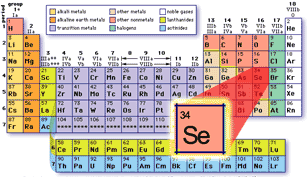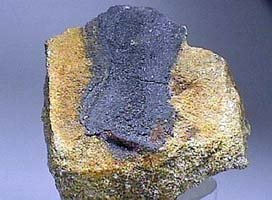One thing is for sure: selenium, given its trace mineral status, should be taken in small amounts, otherwise toxic build-up may occur. In fact, in areas where soil concentrations of selenium are excessively high, plants that are grown therein are toxic to humans and animals alike (indeed, many of selenium's compounds have modes of action similar to arsenic). Conversely, many areas of soil are deficient in selenium, and, as a result, those eating foods produced in this land are advised to seek out supplements, and foods, with added selenium.
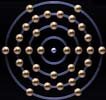 Selenium is nothing new, having been discovered in 1817, in Sweden, by scientist Jons Jacob. However, its disease preventing actions were demonstrated 32 years later, in 1950, when researchers in the US and Germany collaborated to highlight its important antioxidant actions.
Selenium is nothing new, having been discovered in 1817, in Sweden, by scientist Jons Jacob. However, its disease preventing actions were demonstrated 32 years later, in 1950, when researchers in the US and Germany collaborated to highlight its important antioxidant actions.
In 1973, selenium was shown, by researchers at the University of Wisconsin, to be a co-factor of glutathione peroxidase - a detoxifying substance. In light of its historical underpinnings, it is safe to say selenium is immensely important to health and well-being. But why is selenium so important, what are its benefits, and why is selenium deficiency problematic? Read on to find out.

What Is Selenium?
As mentioned, selenium is a trace mineral, or micro-nutrient, important for health and well-being, and a component of all known forms of life (in humans selenium concentrations are highest in the liver and kidneys). It exerts its beneficial effects by combining with proteins to make selenoproteins. These selenoproteins are essentially antioxidant enzymes (glutathione peroxidase specifically), with antioxidant properties, which help to prevent cellular damage resulting from free radical build-up.
Denoted on the periodic table with the symbol Se, and atomic number 34, selenium is chemically related to sulphur and tellurium, and regarded as a toxic non-metal. Copper, sliver and lead are the main sulphide ores, in which selenium, as selenide, occurs.
Selenium, independently, or in tandem with vitamin-E, help to ward off several types of disorder including cancer, 2,10 cataracts, 8,11 heart disease, 2,7,10 fertility problems 8, and neurological conditions/psychological problems 6,9 as mounting research has shown.
These problems might be countered by (in its selenoprotein form) selenium's ability to minimise free radical proliferation. It also plays a major role in the functioning of the thyroid gland, which has mental health ramafications.

What Are Selenium's Benefits?
- Protection Against Certain Types Of Cancer.
-
People with higher blood concentrations of selenium are thought to have a lessened chance of acquiring prostate, lung, co-rectal or skin cancers.
2 In population studies, people in selenium deficient areas have been shown to have higher rates of these cancers compared to the general population, thus strengthening the link between optimum selenium status and free-radical counteraction. Some researchers, on the other hand, believe selenium may work by improving the body's natural immune response against cancer cells and suppressing development of blood vessels to the tumour.
Good news for men: a recent study found that men who had the highest blood concentrations of selenium, cut their chances of getting prostate cancer by one-half to two-thirds, compared to men with lower levels. In one of the most famous selenium studies, researchers found, upon analysing toe clippings (an accurate analytical tool for assessing nutrient status), men who had higher levels of selenium, developed 65% fewer cases of advanced prostate cancer.10
Earlier cancer studies found cancer patients with low levels of selenium, developed more subsequent tumours. Survival rates for cancer patients with low selenium levels were generally shown to be shorter.
- Enhancing Of Immune function.5,6
-
Selenium's immune boosting properties are thought to stem from its ability to strengthen phagocytes (white blood cells that attack invading toxins). It has been shown, also, that selenium enhances the capacity of lymphocytes, to proliferate, and differentiate into cytotoxic effector cells, which kill antibody-coated target cells.
3 This same study demonstrated that the molecular mechanism mediating selenium's effect on immunity is not linked to the function of selenium as an antioxidant, thus highlighting its separate immune bolstering role.
- Protection Against Heart Disease.
-
Serious heart defects in large animals (cattle etc) have been attributed to selenium deficiency. An abnormally low concentration of coenzyme Q10 (a substance essential for healthy heart functioning) in animals with heart defects, is thought to be linked to a deficiency in selenium and vitamin-E (a vitamin that teams with selenium to boost the immune system, and fight disease)
9 - both selenium and vitamin-E are needed to maintain adequate
coenzyme Q10.
Additional lines of evidence suggest oxidative stress created by free-radicals, as a result of selenium deficiency, promote heart disease.7,10 Oxidised LDL cholesterol plays major role in heart disease due to its propensity to contribute to plaque formation, and selenium is thought to limit this oxidation. Selenium may even increase the proportion of beneficial HDL cholesterol to the problematic LDL.
- Protection Against Arthritis.
-
Sufferers of arthritis have been found to have reduced selenium levels in their blood. Arthritis, a chronic disease that causes pain, stiffness, swelling, and loss of function in joints, often results from excessive free-radicals made by the immune system in response to invading organisms.
10 Thus, controlling free-radicals with the help of selenium might relieve the symptoms of arthritis.
- Prevention Of Cataracts.
-
Studies have found that eye lenses that are affected by cataracts have about one-sixth of the normal amount of selenium.
10,11 As a result, researchers believe a selenium deficiency might be a contributory factor in cataract formation.

Cataracts
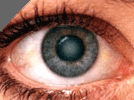 A cataract is a clouding of the natural lens, the part of the eye responsible for focusing light and producing clear, sharp images.
A cataract is a clouding of the natural lens, the part of the eye responsible for focusing light and producing clear, sharp images. The lens is contained in a sealed bag or capsule. As old cells die they become trapped within the capsule.
Over time, the cells accumulate causing the lens to cloud, making images look blurred or fuzzy. For most people, cataracts are a natural result of aging.
In fact, they are the leading cause of visual loss among adults 55 and older. Eye injuries, certain medications, and diseases such as diabetes and alcoholism have also been known to cause cataracts.


Once again, it is selenium's antioxidant function, which fights the free-radical build-up, that negates damage to the eye's lens (the site of cataracts) and the macula at the centre of the eye's retina.10 In the latter case, selenium is also shown to prevent macula degeneration.
- Detoxification Of Poisons.
-
Toxic metals such as arsenic, mercury, and cadmium undergo a reduction in toxicity when they bind with selenium.
8 Shampoos, and various topical medications, have added to them, selenium to offset their toxic effect.
- Protection Of Genetic Materials.
-
Selenium helps to prevent cellular DNA damage resulting from free-radical build-up.
- Enhance Psychological Well-Being.
-
Low levels of selenium have been linked to cognitive decline in the elderly, as well as, confusion, depression, fatigue and anxiety in the adult general population.
9
A 2004 finding indicated selenium might positively effect mood, behaviour and cognitive function due to the significant role it plays in thyroid regulation.1,6 It was suggested that patients who have a combination of hypothyroidism, depression and increased susceptibility to viral infections, could be deficient in selenium.
- AIDS Management.
-
Many vital nutrients are depleted from the body as a result of the damage incurred by AIDS, and selenium is the one micro-nutrient most commonly associated with AIDS, so much so, it has been linked closely to a high risk of death from this disease.
Retroviruses. like HIV/AIDS, cause the depression of selenium by encoding the gene for the human selonoprotein glutathione peroxidase.10 As mentioned, glutathione peroxidase is the antioxidant enzyme form of selenium, and if its gene is encoded, in response to retroviral attack, the virus will replicate indefinitely by continually depriving the body of glutathione.
Opportunistic pathogens will then invade the immune system to further deplete the body of selenium, which compromises the immune system further, and hastens AIDS related death.
- Prevention Of Fertility Problems.
-
Selenium deficiency has been linked to sperm abnormalities and increased risk of early pregnancy loss.
11, 12 In fact, healthy sperm formation is dependant, to a large extent, on selenium intake - blood levels of selenium are found to be lower in men with low sperm counts.12 sufficient blood levels of selenium also have been shown to help prevent chromosome breakage, which is known to be a leading cause of birth defects and miscarriages.

Signs Of Deficiency
Selenium Deficiency Might Include:
- Muscle weakness and fatigue.
- A risk for cancer.
- Immune system problems.
- Heart disease.
- Inflammatory problems (especially skin related).

Dangers Of Over-Consumption
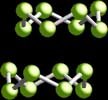 Over-supplementation of selenium can result in a serious toxic reaction, although this is rare, given a considerable amount would be needed to have this effect. An overdose could cause hair loss, nausea, vomiting, and fingernail changes (which occurred in one case where people consumed 500-times the RDA).11,13,14,15
Over-supplementation of selenium can result in a serious toxic reaction, although this is rare, given a considerable amount would be needed to have this effect. An overdose could cause hair loss, nausea, vomiting, and fingernail changes (which occurred in one case where people consumed 500-times the RDA).11,13,14,15
This condition is called selenosis, and can include additional symptoms of mild nerve damage and gastrointestinal distress.13 A lesser, more likely toxic effect, might cause depression, garlicky breath and anxiety. However, given many rely on diet for their selenium requirement, any level of toxicity is unlikely, for these people. Experts caution against more than 200mcg used on a long-term basis, until a safe dosage is ascertained.
Note: mcg = microgram" or one-millionth of a gram.
 Recommended Intake (dosage):
Recommended Intake (dosage):
The Recommended Daily Allowances (RDA) For Selenium Are Set At The Following: 4,8
- Infants under six-months: 10mcg.
- Children, one-six years: 20mcg.
- Children seven-ten: 30mcg.
- Males 11-14: 40mcg.
- Males 15-18: 50mcg.
- Males 19 and over: 70mcg.
- Females 11-14: 45mcg.
- Females 15-18: 50mcg.
- Females 19 and over: 55mcg.
- During pregnancy: 65mcg.
- Breast feeding: 75mcg.
However, dosage information varies drastically for special populations.
These Are As Follows: 11
- For preventing against the effects of again or for cancer prevention: 400mcg-per-day.
- Macular degeneration and cataract prevention: 200-400mcg-per-day.

The Best Sources Of Selenium
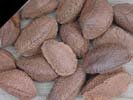 The most concentrated food source of selenium is the Brazil nut, with a single nut containing almost 120mcg (twice the RDA). Thus, it is advisable to eat Brazil nuts only very occasionally, due to the potentially toxic effect they may have, in light of their high selenium levels (one ounce may contain up to 600mcgs).
The most concentrated food source of selenium is the Brazil nut, with a single nut containing almost 120mcg (twice the RDA). Thus, it is advisable to eat Brazil nuts only very occasionally, due to the potentially toxic effect they may have, in light of their high selenium levels (one ounce may contain up to 600mcgs).
The most common sources of selenium include bread and meat. Animals that eat grains or plants grown in selenium rich soil are likely to have higher levels of selenium in their meat content. Seafood, as well, is often rich in selenium. Three-ounces of tuna, for example, has a relatively high 63mcgs of selenium.
Supplemental selenium can be used in instances where it has been shown that one is clearly deficient in this mineral. Those with widespread infection, or gastrointestinal problems such as Crohn's disease16, are most likely to be deficient in selenium, and would therefore qualify for larger, supplemental dosages. Selenium supplements can also be used, on a smaller scale, by the general population, to ensure they are not lacking in this vital nutrient.
 |
What Is Crohn's Disease? Crohn's disease causes inflammation in the small intestine. Crohn's disease usually occurs in the lower part of the small intestine, called the ileum, but it can affect any part of the digestive tract, from the mouth to the anus. The inflammation extends deep into the lining of the affected organ. The inflammation can cause pain and can make the intestines empty frequently, resulting in diarrhea. The most common symptoms of Crohn's disease are abdominal pain, often in the lower right area, and diarrhea. Rectal bleeding, weight loss, and fever may also occur. Bleeding may be serious and persistent, leading to anemia. Children with Crohn's disease may suffer delayed development and stunted growth. |
 |
 |
||

Conclusion
Selenium, as a vital trace-mineral, is important in terms of ensuring complete health and well-being. Selenium deficiency has been linked to all major health conditions, from cancer to heart-disease, low immunity to cataracts. Ensure all nutritional basis are covered by eating selenium rich foods, and supplementing if necessary.
References
- Arthur JR. The role of selenium in thyroid hormone metabolism. Can J Physiol Pharmacol 1991;69:1648-52.
- Hercberg S, Galan P, Preziosi P, Roussel AM, Arnaud J, Richard MJ, Malvy D, Paul-Dauphin A, Briancon S, Favier A. Background and rationale behind the SU.VI.MAX Study, a prevention trial using nutritional doses of a combination of antioxidant vitamins and minerals to reduce cardiovascular diseases and cancers. Supplementation en VItamines et Mineraux AntiXydants Study. Int J Vitam Nutr Res 1998;68:3-20
- Kiremidjian-Schumacher L,. & Roy M.(1998). Selenium and Immune Function. Suppl 1:50-6
- Levander OA. Scientific rationale for the 1989 recommended dietary allowance for selenium. J Am Diet Assoc 1991;91:1572-6.
- McKenzie RC, Rafferty TS, Beckett GJ. Selenium: an essential element for immune function. Immunol Today 1998;19:342-5.
- M. Ferencik, L. Ebringer. Modulatory effects of selenium and zinc on the immune system. Folia Microbiol. 2003 48(3), 417-426.
- Neve, J. (1996) Selenium as a risk factor for cardiovascular diseases. J. Cardiovasc. Risk 3:42-47.
- Roberts, A., O'Brien, M., & Subak-Sharpe, G.(2001) Nutraceuticals: the Complete Encyclopaedia. Pedigree; NY.
- Rayman MP. "The importance of selenium to human health." Lancet. 356(9225):233-41, 2000.
- Turner, S.(1992). New Research: Selenium May Protect Against Viruses, Heart Disease, Arthritis, Hepatitis, and Cancer. HMS Monitor.
- Whole-Mind MD.com.(2000). Selenium. [Online]
- Glenville, M.(2005). Natural Solutions to Infertility. The Natural Health Website for Women. [Online]
- Koller LD and Exon JH. The two faces of selenium-deficiency and toxicity are similar in animals and man. Can J Vet Res 1986;50:297-306.
- Hathcock J. Vitamins and minerals: Efficacy and safety. Am J Clin Nutr 1997;66:427-37.
- Raisbeck MF, Dahl ER, Sanchez DA, Belden EL, O'Toole D. Naturally occurring selenosis in Wyoming. J Vet Diagn Invest 1993;5:84-7.
- Kuroki F, Matsumoto T, Lida M. Selenium is depleted in Crohn's disease on enteral nutrition. Digestive Diseases 2003;21:266-70.

